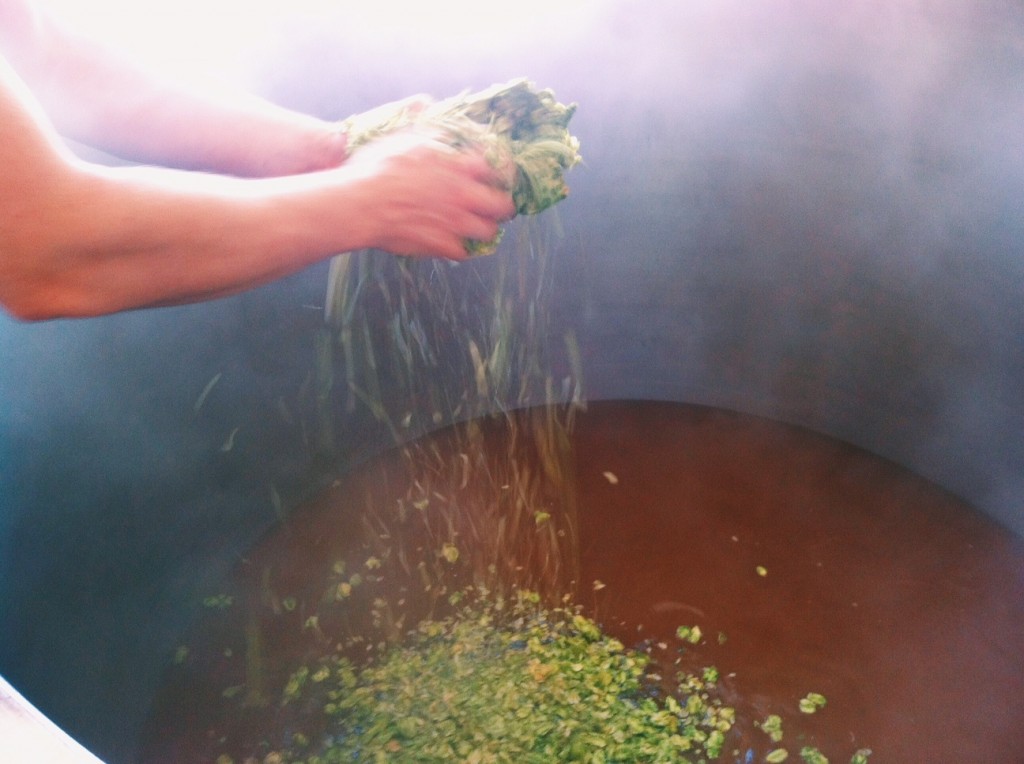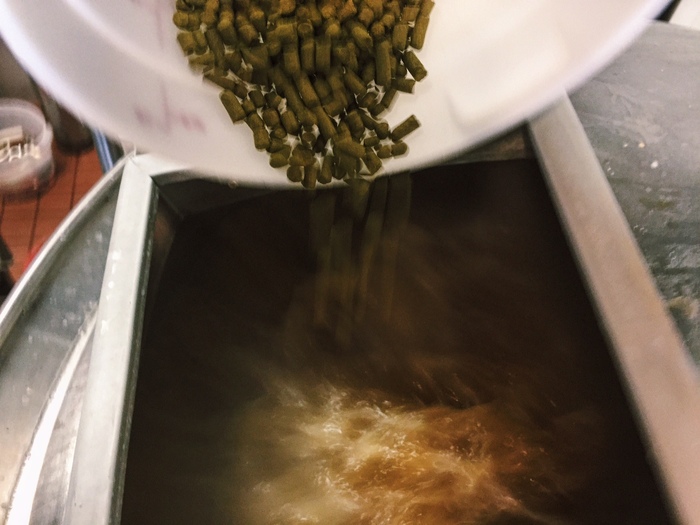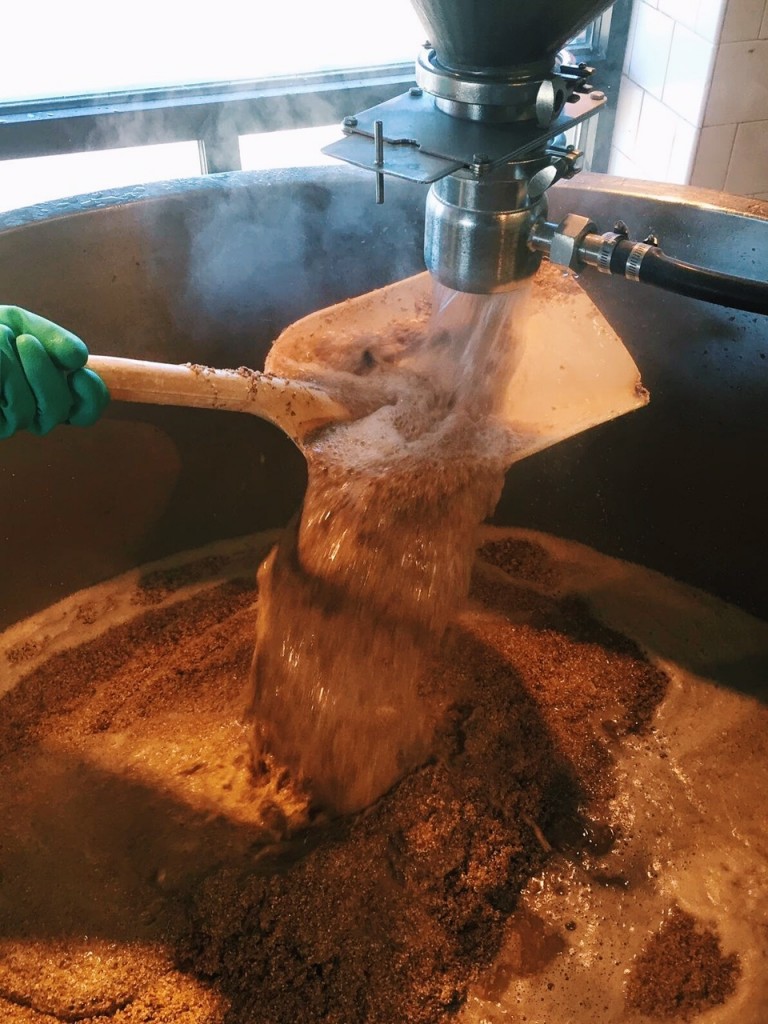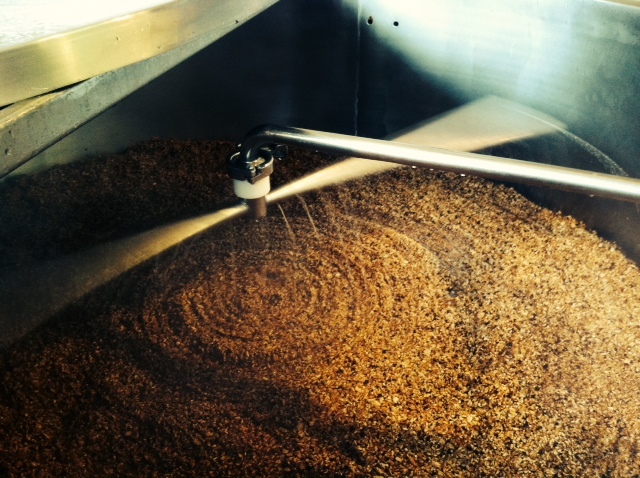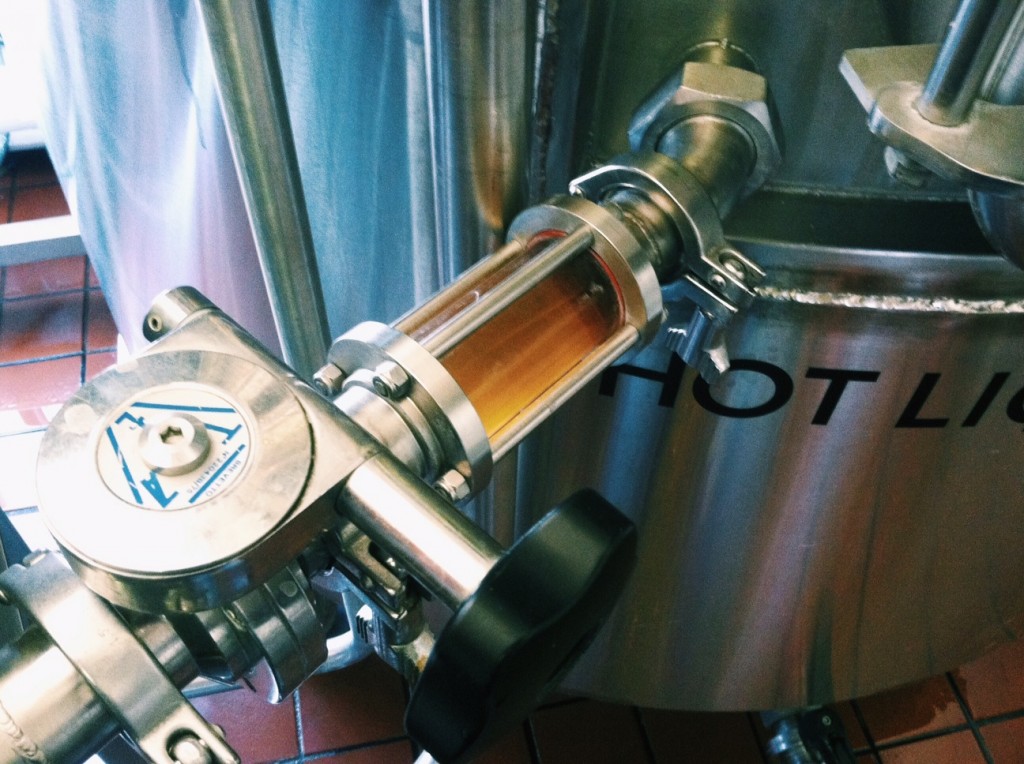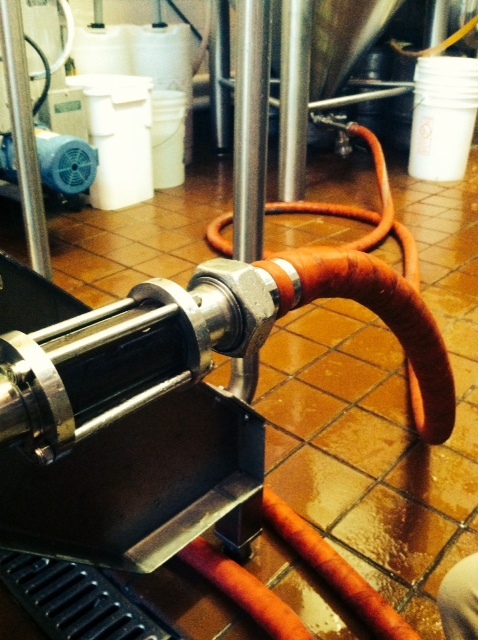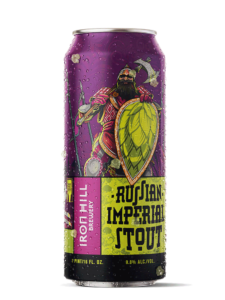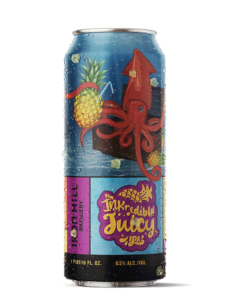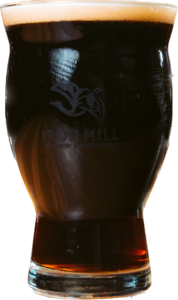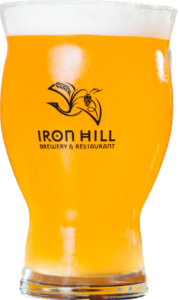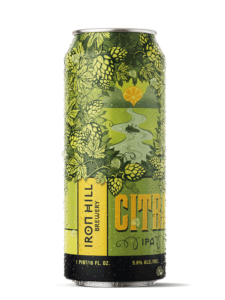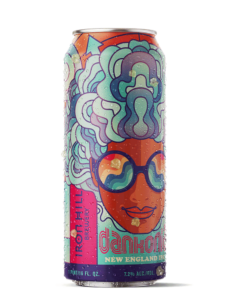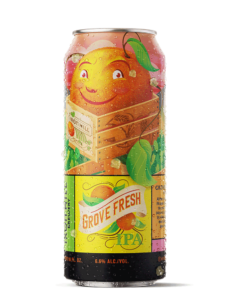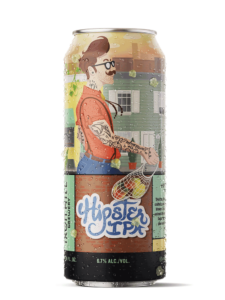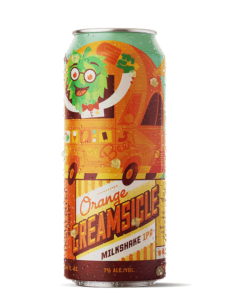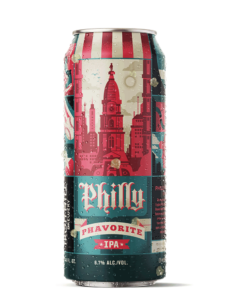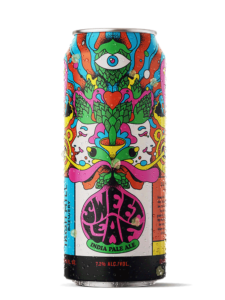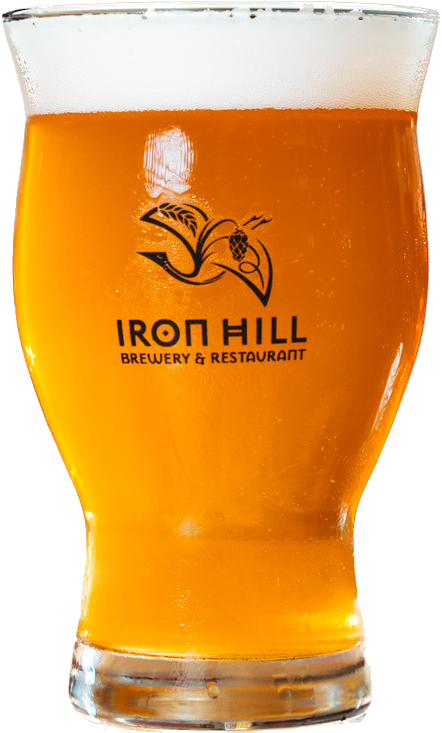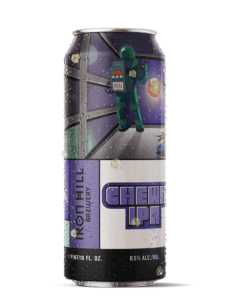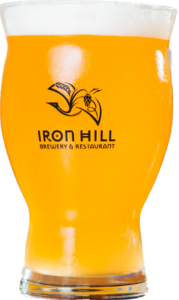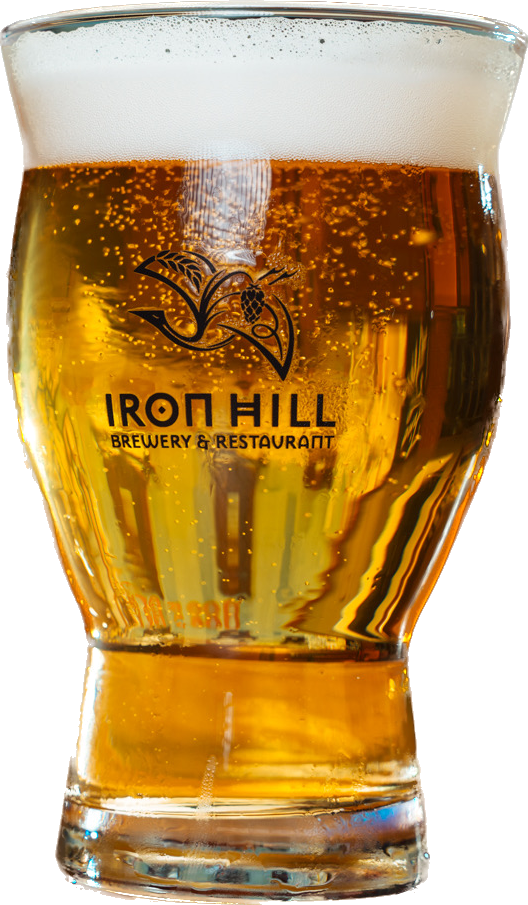We’re craft brewers, and we’re darn proud to say it. Every day we work for you, our thirsty Iron Hill Brewery & Restaurant customer, by hand-creating fresh, delicious beer.
But what does it mean to be a craft brewer?
“As craft brewers, we use the best ingredients available to us—every time,” said Iron Hill Media Head Brewer Andrew Johnston. “We carefully select our sources for barley, hops, yeast and water because every single thing we put into the process will impact the final product. We’re on the lookout for farmers and maltsters who know what they’re doing to create malted barley to produce the right flavors. We also search far and wide to get the best hops with the right alpha acids, aroma and flavor compounds.”
Andrew says it takes a good 7–10 years to get the hop shoot to where it’s actually being used by a mass amount of craft brewers. This often becomes a partnership: hop growers will ask brewers to sample and make beers with their hops to see if they produce the right aroma and flavor; if not, they scrap the hops and start over.
At Iron Hill, we’re just as serious about our recipes as we are our ingredients. Naturally there’s plenty of research involved … and by research we mean visiting other breweries, having a beer and talking shop. There’s a camaraderie among craft brewers, a sharing of information and insight rarely found in other industries.
“Inspiration also comes from food,” Andrew noted. “As a brewer, sometimes you eat something and a spice hits you and you think, ‘I wonder what I could do with that?’—and an idea for a new recipe is born.”
Filled with inspiration, we head to the brewery at our respective Iron Hill locations and get to work.
We take all the raw ingredients and weigh them.
We mill the grain to crack it open to the right size—not powdery like flour, or it will turn to mush, and not to the other extreme, or we won’t get the right starches. We store cracked grain in the grist hopper.
We head to the brewery and weigh the rest.
That includes hops, brewing salts, gypsum, water and whatever else is needed that day. It’s worth noting the type of brewing salts makes a huge difference. We use calcium chloride for lagers, for example, to give them their delicate, crisp and clear character. Gypsum hardens the water to bring out hop bitterness, flavor and aroma for big IPAs.
We start the mash process.
Our grist auger pulls the cracked grain up to the mash tun where we rehydrate it to kick the enzymatic process into gear. Those enzymes go to town to turn the grain into sugars that will feed the yeast. This process—where we basically take a giant shovel and stir what looks like a big pot of oatmeal—takes about 30 minutes. Then it rests for roughly an hour.
We begin recirculation.
Here we use a naturally occurring filter bed—husks!—to pull liquid from the bottom of the mash tun and place it back on top. It filters down and clarifies the wort. We do this until the sugary wort clears.
We move the wort from the mash tun to the kettle.
There it gets sparged for about 90 minutes. Hot water is gently sprinkled over the grain and slowly seeps through it to grab those extra sugars. Then, we start the boiling process to sanitize the wort and remove naturally occurring microscopic bacteria that will cause the beer to sour if not banished. Boiling also concentrates those important sugars, too. Once we get to a good, vigorous boil we’ll add hops, which provide the bitterness to balance the sugar’s sweetness. Depending on the type of beer we’re brewing, we’ll continue to add hops for flavor; we’ll definitely add them at the end for aroma.
We transfer the wort to the heat exchanger.
This is where we cool the wort; our heat exchanger works like a car radiator. The wort runs one way, and cold water and food-grade cooling glycol run the other way. As this happens the water heats up from the hot wort and the wort cools down. We recapture that hot water to clean the brewery, and the glycol is in a closed loop so it goes back to a reservoir to cool down to serve our wort another day.
We flow the cooled wort into the fermenter.
At this point, we’ll pitch in yeast to ensure a healthy fermentation. We see fermentation at work within about 24 hours: the yeast starts turning sugar into alcohol, CO2 and flavor components.
We clean.
Seriously. Once fermentation starts, we spend the rest of the day cleaning and sanitizing the brewery. The spoils for going from brewer to janitor? An Iron Hill beer and meal.
We watch and wait.
It takes up to six weeks (sometimes more!), depending on the beer, to ferment. Our House Beer White Iron Wit takes about two weeks; ales two to four weeks; lagers four to six weeks; and our most awarded beer, Russian Imperial Stout, up to six weeks. When we’re brewing beers with specific flavor notes, like our Overload Stout, we use the end of fermentation time to add ingredients like cocoa nibs, vanilla beans and coffee beans. This is also when we dry hop select beers.
We condition the beer.
When fermentation ends, we cold condition by bringing it almost to a freezing point. This locks in flavors and drops out a lot of the yeast. The process takes a few days and is a very important step to get the great taste Iron Hill delivers.
We filter the final product.
Delicious beer is almost ready for you! We filter it into brite tanks that can hold up to 300+ gallons. Here it merges with a carbon dioxide stone and in about 12 hours it’s settled and ready to go. At Iron Hill, beer goes from the brite tank to the beer pump to the tap. It’s fast to the bar, super fresh, perfectly carbonated and ready to enjoy.
We bottle and can.
When beer is being targeted for bottles, we filter it into the brite tank and blend in yeast and sugar for bottle conditioning. That goes into kegs; bottles are filled from individual kegs to ensure quality. We cage and cork them, and within about two weeks the yeast and sugar create the CO2 that soaks back into the beer. When the final destination is cans, we call on our friends at River City Cannery, who show up and put our finished and carbonated beer into cans. Perfect!
“One more thing I want to point out: the biggest thing people don’t understand about craft beer is that it’s hands on—not a flick of a switch or the push of a button,” Andrew emphasized. “At Iron Hill, there’s one or two people keeping an eye on our beer at all times. We make sure everything is going as expected so the beer you drink is brewed properly and correctly every time.”
“We’re proud to be craft brewers,” he continued. “It means pushing the limits to make something a little bit better or to take all the R&D we do and make it our own. We always want to find that new, fun and inventive product so our customers say ‘wow.’”
Come visit us and sample what our brewers have hand-crafted for you!
With 11 locations—and number 12 on the way—in Pennsylvania, Delaware and New Jersey, there’s an Iron Hill Brewery & Restaurant near you. We specialize in handcrafted beers and fresh, from-scratch New American cuisine. Monthly releases vary by location, so scout out our beers on tap and visit us soon.



